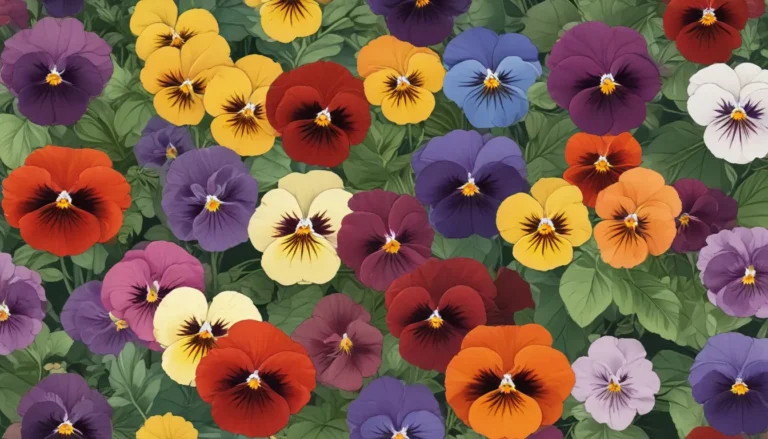A Comprehensive Guide to Identifying and Managing Common Nasturtium Pests

Nasturtiums (Tropaeolum spp.) are delightful flowering perennials that can thrive in USDA Hardiness Zones 9 to 11. These versatile plants can also be grown as annuals in temperate regions. With their stunning colors ranging from orange to red and yellow, they are not only a beautiful addition to any garden but are also edible.
If you’re looking to cultivate these lovely plants, you’re in the right place. In this detailed guide, we’ll cover everything you need to know about growing nasturtiums and how to identify and manage common pests that might affect them.
Getting Started with Nasturtiums
Before we delve into pest management, let’s touch on the basics of growing nasturtiums. Here are a few key points to keep in mind:
- Nasturtiums prefer full sun to part shade and moist, well-draining soil.
- They come in approximately 80 different species with a variety of growth habits, such as dwarf bushy, climbing, and semi-trailing.
- These plants are generally easy to grow and offer a dazzling color palette to choose from.
If you’re ready to tackle the challenge of cultivating nasturtiums, let’s move on to the main topic of discussion: identifying and managing pests.
Common Nasturtium Pests
When growing nasturtiums, you’re likely to encounter various pests that can cause damage to your plants. Here are nine common pests to watch out for:
- Aphids
- Flea Beetles
- Leafhoppers
- Leaf Miners
- Mealybugs
- Moth Caterpillars
- Slugs and Snails
- Spider Mites
- Whiteflies
Now, let’s explore each of these pests in more detail.
1. Aphids
Aphids are tiny sap-sucking insects that thrive in cool, wet weather and lush foliage. You can identify them by the yellowish or blackish eggs they deposit on the undersides of leaves. To manage aphids, consider the following strategies:
- Handpick aphids and drop them into a solution of dish detergent and water.
- Use neem oil or organic insecticides to control severe infestations.
- Plant diverse flowering flora to attract beneficial insects that feed on aphids.
2. Flea Beetles
Flea beetles are small insects that resemble beetles and feed on the undersides of leaves, creating characteristic “shot holes.” To manage flea beetles:
- Apply diatomaceous earth at the soil level to target beetle larvae.
- Avoid using pyrethrin insecticides on edible plants.
- Refer to our detailed guide on flea beetle management for further information.
3. Leafhoppers
Leafhoppers are agile insects that feed on the upper surfaces of foliage, leaving white speckles. It can be challenging to control leafhoppers due to their mobility. However, you can try using neem oil as a deterrent.
4. Leaf Miners
Leaf miners are the larvae of certain fruit flies that tunnel inside leaves, creating distinctive patterns. To manage leaf miners:
- Remove and destroy affected foliage to prevent infestations.
- Avoid using insecticides due to common resistance in leaf miner species.
5. Mealybugs
Mealybugs are soft-bodied insects that feed on plant juices and leave a waxy excretion on plant tissue. To control mealybugs:
- Use neem oil or organic methods to dislodge and eliminate the insects.
- Introduce natural predators like ladybugs and lacewings to combat mealybugs.
6. Moth Caterpillars
Caterpillars can defoliate plants rapidly, especially during the spring and summer months. To manage moth caterpillars:
- Consider using neem oil or Bacillus thuringiensis (Bt) against caterpillar infestations.
- Handpick caterpillars and remove eggs to prevent further damage.
7. Slugs and Snails
To control slugs and snails that feed on nasturtium foliage:
- Use traps, home remedies, or natural deterrents like beer, salt, or eggshells.
- Refer to our comprehensive guide on slug and snail management for effective strategies.
8. Spider Mites
Spider mites, particularly the two-spotted variety, can cause damage to nasturtium foliage. To manage spider mites:
- Wash plants with water and apply neem oil as a secondary treatment.
- Consult our guide on dealing with spider mites for expert advice.
9. Whiteflies
Whiteflies are flying insects that leave white eggs on the undersides of leaves. To control whiteflies:
- Dislodge adults with a strong hose spray and remove heavily infested foliage.
- Use organic neem oil as a safe and effective treatment against whiteflies.
The Benefits of Nasturtiums in Your Garden
While pests can pose a challenge to your nasturtium plants, these colorful flowers offer numerous benefits in the garden. Consider the following advantages of growing nasturtiums:
- Beautiful colors add visual appeal to your outdoor space.
- Edible flowers and foliage provide a delightful addition to summer dishes.
- Trap crop and repellent qualities divert pests from other valuable plants.
- Attractor of beneficial insects that contribute to biodiversity in the garden.
By incorporating nasturtiums into your garden, you not only enhance its aesthetic appeal but also contribute to a healthy ecosystem that supports diverse plant and insect life.
Conclusion
In conclusion, growing nasturtiums can be a rewarding experience, but it’s essential to be vigilant in managing common pests that may affect these plants. By identifying and implementing effective strategies to control aphids, flea beetles, leafhoppers, and other pests, you can ensure the health and vitality of your nasturtiums.
Remember to utilize natural remedies, organic insecticides, and beneficial insects to maintain a pest-free garden environment. With proper care and attention, you can enjoy the beauty and benefits of nasturtiums throughout the growing season.
If you’ve encountered pest issues with your nasturtiums or have valuable insights to share, feel free to leave a comment below. We’d love to hear about your experiences!
For more information on growing and caring for nasturtiums, check out these additional articles:
- 15 of the Best Nasturtium Varieties
- How to Care for Nasturtiums in Winter
- Should I Deadhead My Nasturtium Plants?
We hope you found this guide informative and helpful in your gardening endeavors. Happy growing!
*





